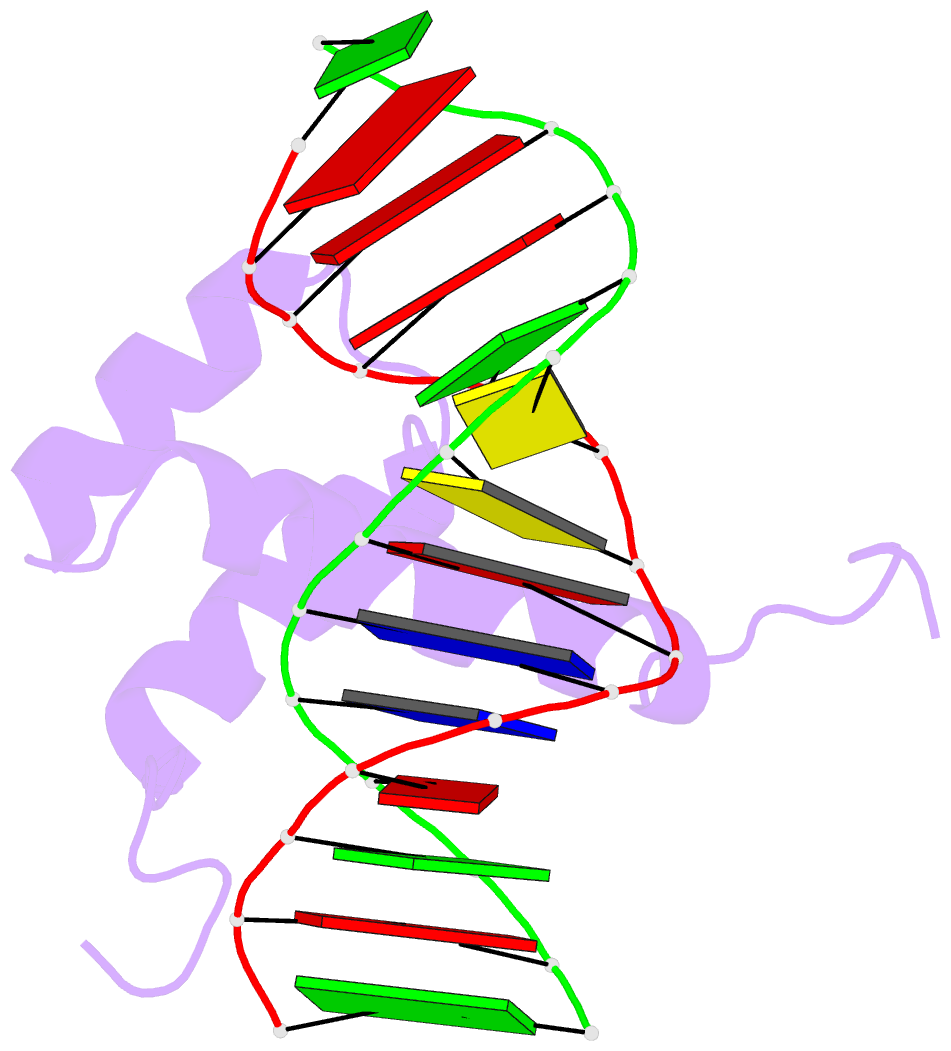Summary information and primary citation
- PDB-id
- 1ahd; SNAP-derived features in text and JSON formats;
DNAproDB
- Class
- DNA binding protein-DNA
- Method
- NMR
- Summary
- Determination of the NMR solution structure of an antennapedia homeodomain-DNA complex
- Reference
- Billeter M, Qian YQ, Otting G, Muller M, Gehring W, Wuthrich K (1993): "Determination of the nuclear magnetic resonance solution structure of an Antennapedia homeodomain-DNA complex." J.Mol.Biol., 234, 1084-1097. doi: 10.1006/jmbi.1993.1661.
- Abstract
- The nuclear magnetic resonance (NMR) solution structure of a complex formed by the mutant Antennapedia homeodomain with Cys39 replaced by Ser, Antp(C39S), and a 14 base-pair DNA duplex containing the BS2 operator sequence was determined using uniform 13C and 15N-labeling of the protein. Two-dimensional nuclear Overhauser enhancement spectroscopy ([1H,1H]NOESY) with 15N(omega 2)-half-filter and 13C(omega 1, omega 2)-double-half-filter, and three-dimensional heteronuclear-correlated [1H,1H]NOESY yielded a total of 855 intramolecular NOE upper distance constraints in the homeodomain, 151 upper distance constraints within the DNA duplex, and 39 intermolecular protein-DNA upper distance constraints. These data were used as the input for the structure calculation with simulated annealing followed by molecular dynamics in a water bath and energy refinement. A group of 16 conformers was thus generated which represent the solution structure of the Antp(C39S) homeodomain-DNA complex. The new structure determination confirms the salient features reported previously from a preliminary investigation of the same complex, in particular the location of the recognition helix in the major groove with the turn of the helix-turn-helix motif outside the contact area with the DNA, and the N-terminal arm of the homeodomain contacting the minor groove of the DNA. In addition, distinct amino acid side-chain-DNA contacts could be identified, and evidence was found that the invariant residue Asn51 (and possibly also Gln50) is in a slow dynamic equilibrium between two or several different DNA contact sites. The molecular dynamics calculations in a water bath yielded structures with hydration water molecules in the protein-DNA interface, which coincides with direct NMR observations of hydration waters. In the Appendix the experimental data obtained with the Antp(C39S) homeodomain-DNA complex and the techniques used for the structure calculation are evaluated using a simulated input data set derived from the X-ray crystal structure of a DNA complex with a homologous homeodomain. This study indicates that a nearly complete set of NOE upper distance constraints for the Antp(C39S) homeodomain and the protein-DNA interface was presently obtained. It further shows that the structure calculation used here yields a precise reproduction of the crystal structure from the simulated input data, and also results in hydration of the protein-DNA interface in the recalculated complex.





